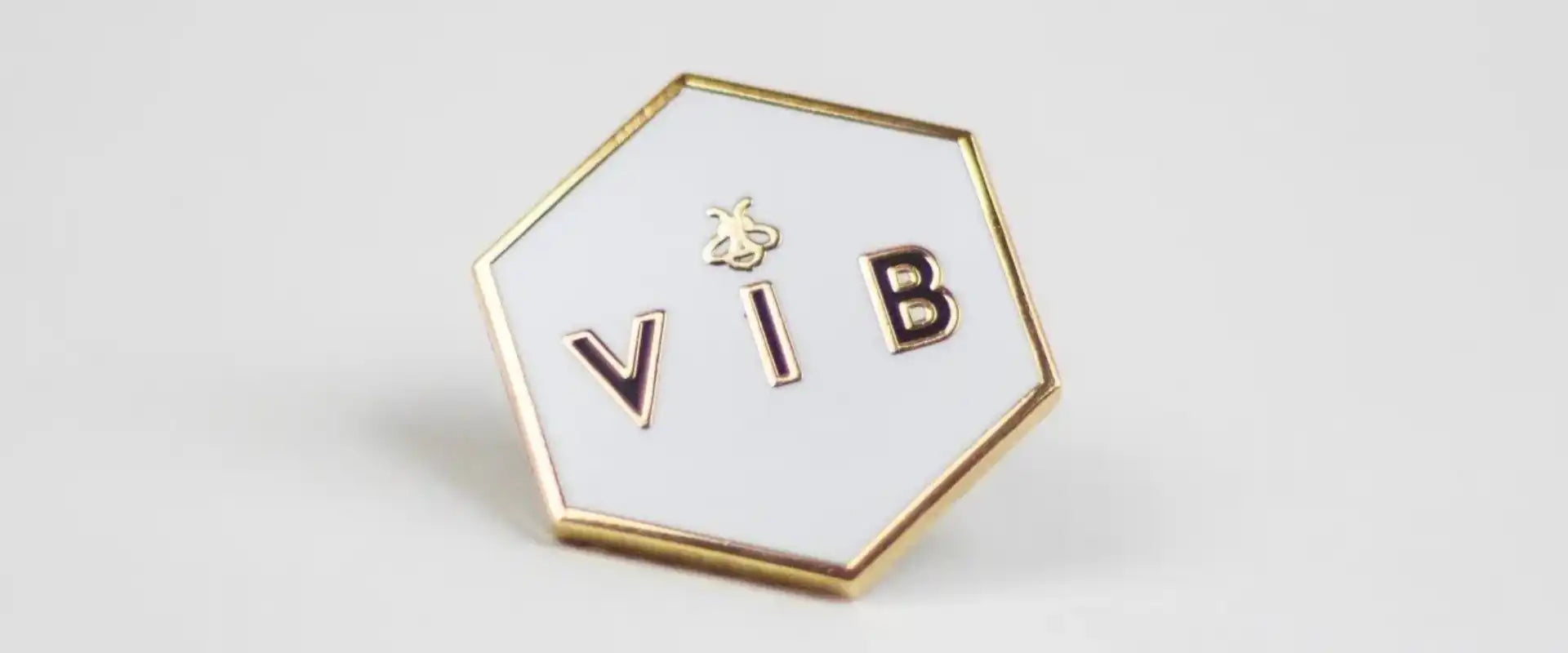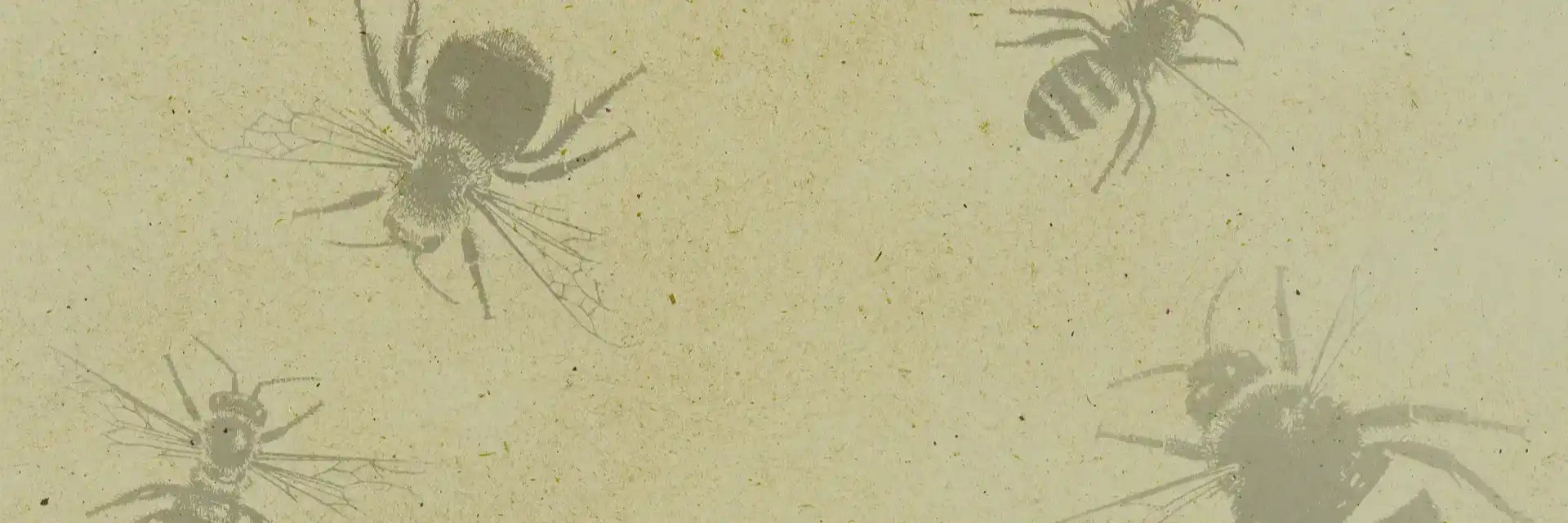
TYPES OF BEES
In the UK alone there are over 276 species of bee and over 20,000 worldwide. To help you correctly identify the bee you have spotted, we created this bee identification guide of the most common bees in the UK.
HONEY BEES
(Apis)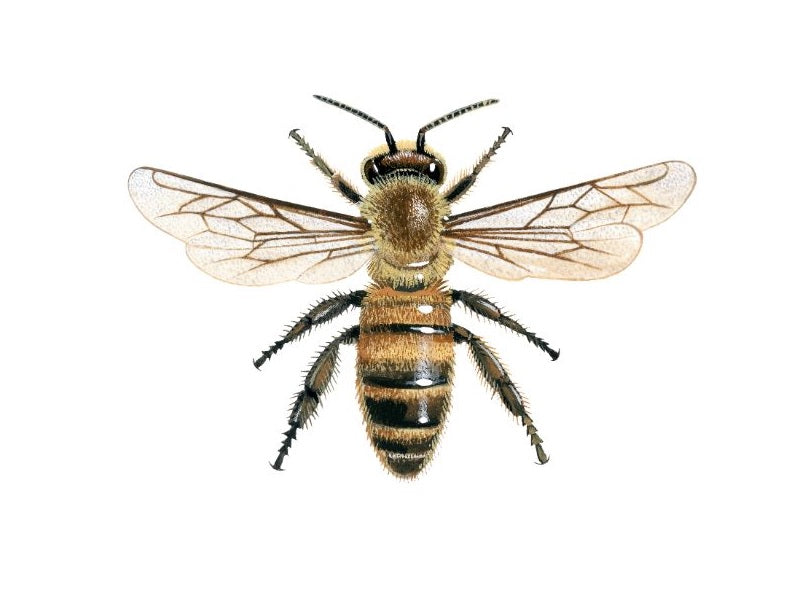
Illustration of female worker honey bee
Honey Bee
Apis mellifera
How to identify: Honey bees have large hairy eyes and bare shiny rear legs. Their abdomen is often warm amber-brown and black striped or black all over. Females carry pollen in balls on their hind legs.
When to see: March to October.
Fun fact: Only the female honey bee can sting, however they cannot sting more than once. They have a barbed stinger at their tail end, which means that when they sting the stinger gets lodged and cannot be pulled out again without causing injury or death.
BUMBLEBEES
(Bombus)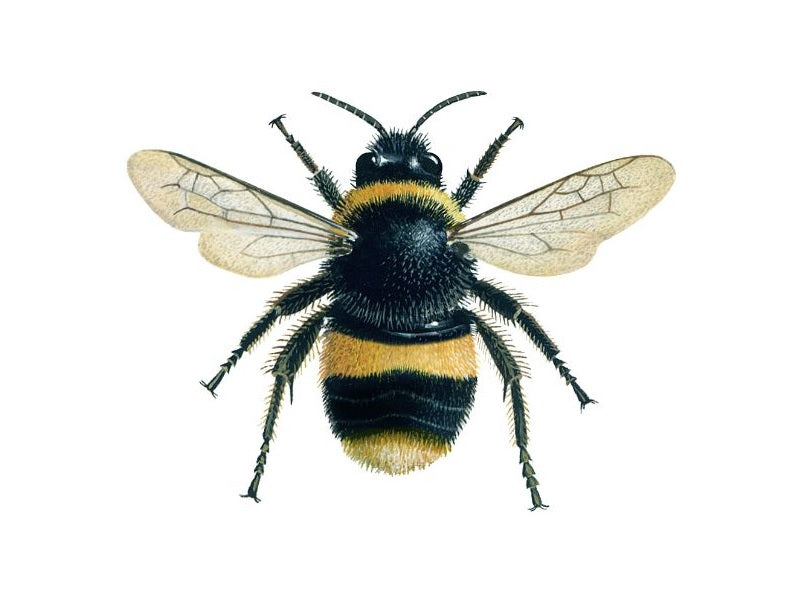
Illustration of female worker buff-tailed bumblebee
Buff-Tailed Bumblebee
Bombus terrestris
How to identify: Buff-tailed bumblebees are one of the biggest types of bumblebee in the UK and can be identified by their two golden yellow stripes and yellowish buff tail. The female worker bee (pictured) has a white tail with a subtle buff line separating the tail from the rest of the abdomen, whereas the male bee has a buff-tinged tail.
When to see: March to August
Fun fact: Buff-tailed Bumblebees nest underground in large groups of over 500 bees, often using old mouse or vole nests.
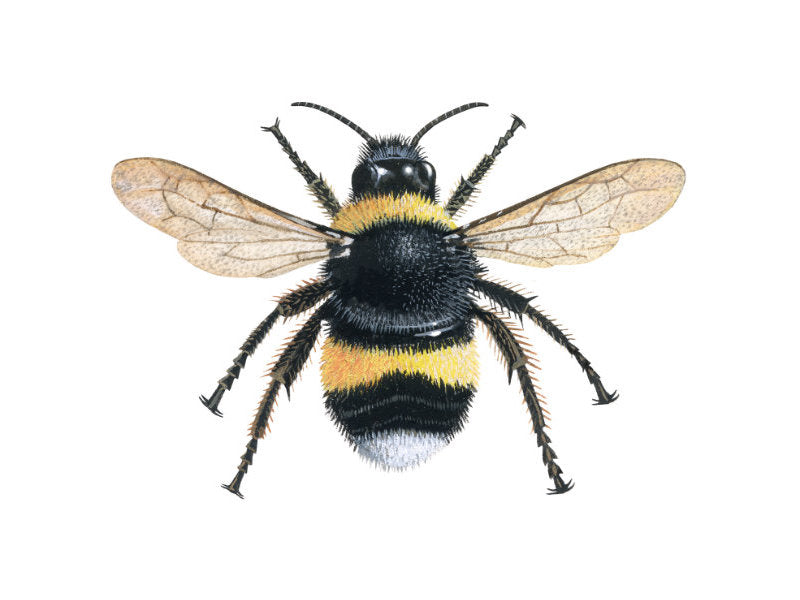
Illustration of queen white-tailed bumblebee
White-Tailed Bumblebee
Bombus lucorum
How to identify:
Often confused with the buff-tailed bumblebee, the white-tailed bumblebee is black with two bright lemon-yellow stripes and a bright white tail. The males of this species have additional yellow hair on their head as well as varying amounts on their thorax and abdomen.
When to see:
March to November.
Fun fact:
Did you know that a bumblebee can travel up to 6 km per day to visit flowers? Cool huh!?
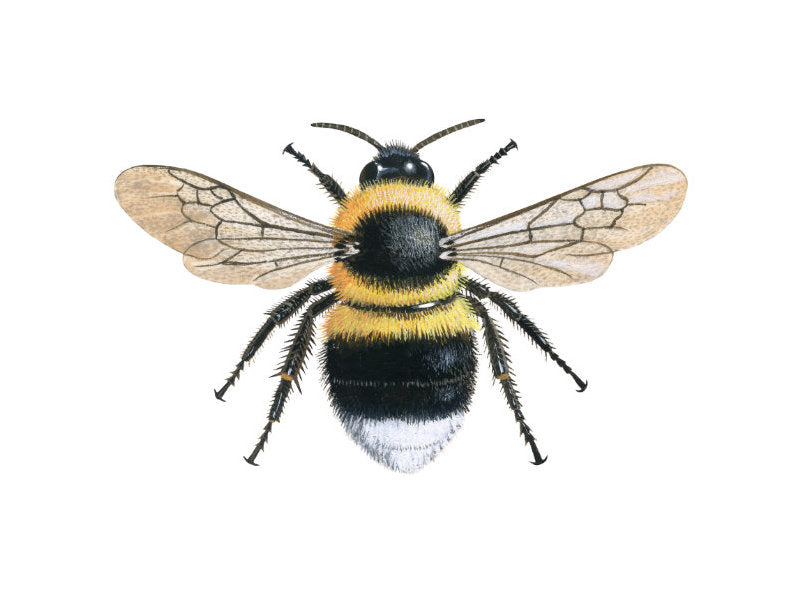
Illustration of female worker garden bumblebee
Garden Bumblebee
Bombus hortorum
How to identify:
The garden bumblebee is black with three yellow stripes. One at the front and rear of the thorax and a third at the front of the abdomen. The tail is a bright white colour.
When to see:
March to October.
Fun fact:
The garden bumblebee has the longest tongue of all bumblebees. It can stretch up to 2 cm, allowing it to reach the nectar in deep flowers such as foxgloves and honeysuckle.
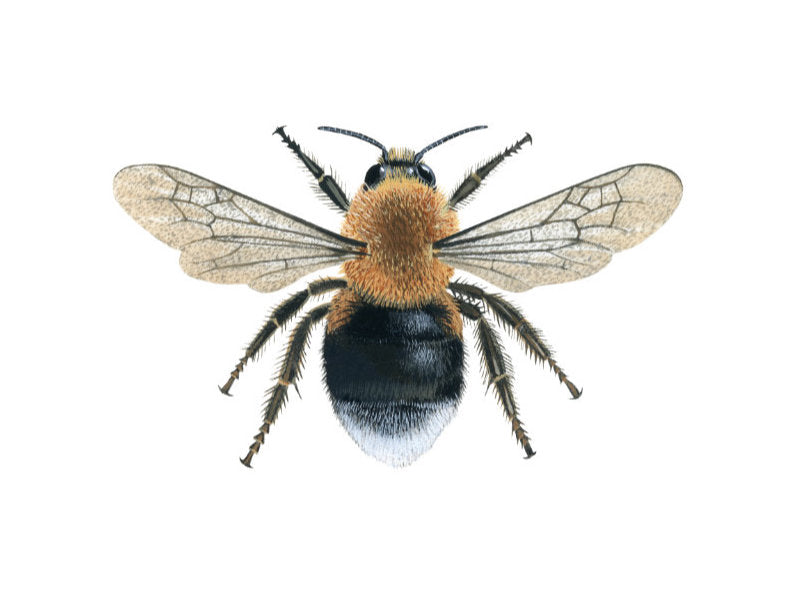
Illustration of female worker tree bumblebee
Tree Bumblebee
Bombus hypnorum
How to identify:
Tree bumblebees have a fuzzy ginger-brown thorax, with a black abdomen and white tail.
When to see:
March to July.
Fun fact:
Unlike other bumblebees, the tree bumblebee likes to nest in cavities such as holes in trees (hence the name), old bird nests, bird nest boxes and roof spaces.

Illustration of female worker common carder bumblebee
Common Carder Bumblebee
Bombus pascuorum
How to identify:
The common carder bee is almost entirely brown or ginger, with some black hairs covering the centre of the abdomen.
When to see:
March to November.
Fun fact:
The name of the common carder bee is derived from the verb ‘to card’, describing the way in which they comb materials together to create a thatch covering for their nests.

Illustration of queen red-tailed bumblebee
Red-tailed Bumblebee
Bombus lapidarius
How to identify:
Red-tailed bumblebees have a jet black body with a bright red tail which covers up to half of the abdomen. Males have bright yellow facial hair and two
slim yellow bands across the front and rear of the thorax.
When to see:
April to November.
Fun fact:
Red-tailed bumblebees, along with other types of bumblebee, are non-aggressive and will only sting if they feel threatened.

Illustration of queen early bumblebee
Early Bumblebee
Bombus pratorum
How to identify:
Early bumblebees are small, black and fluffy with a yellow band on the thorax and the abdomen, with an orange-red tail. The yellow band is usually less pronounced in the worker bees and the males have additional yellow facial hair.
When to see:
March to June.
Fun fact:
Early bumblebees are known to visit a wide variety of flowers for both their pollen and nectar and are an important pollinator of soft fruits, such as raspberries and blackberries.
SOLITARY BEES

Illustration of female tawny mining bee
Tawny Mining Bee
Andrena fulva
How to identify:
The females are covered with dense fox-red hair on their thorax and abdomen with black hair on their legs, head and underside of body. They can also be seen carrying pollen on their hind legs. The male bees are smaller in
size and are less vivid in colour. They also have white tufts of hair on their face, which can look like a tiny moustache.
When to see:
March to June. One of the first solitary bees to be seen in the year!
Fun fact:
The Tawny mining bee is a common, spring-flying bee whose flight time coincides with the flowering of fruit trees like cherry, pear and apple.
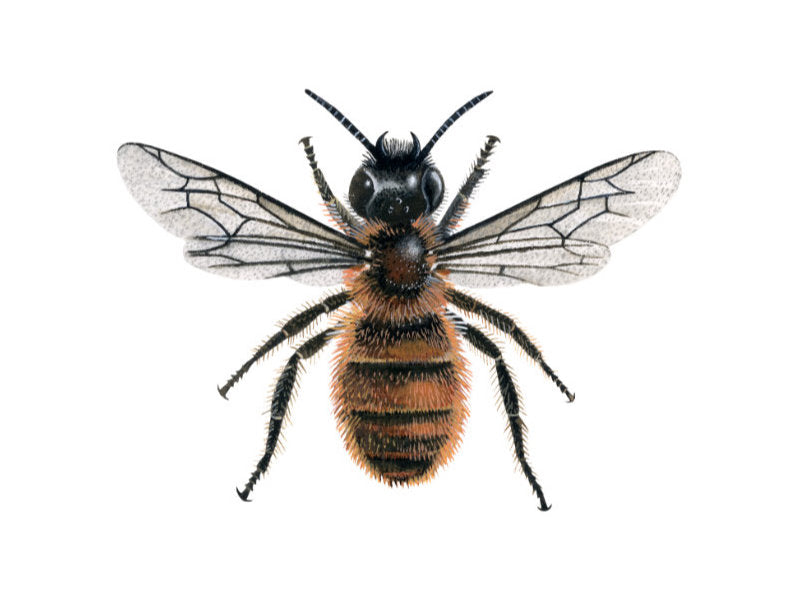
Illustration of female red mason bee
Red Mason Bee
Osmia rufa
How to identify:
Often confused with the tawny mining bee, red mason bees are small in size and have a light brown thorax and orange-red abdomen. Female red mason bees collect pollen on the underside of their abdomen.
When to see:
March to June.
Fun fact:
Red mason bees are ‘cavity nesting’ solitary bees, building nests in hollow stems and bee hotels, using mud to plug the entrance.
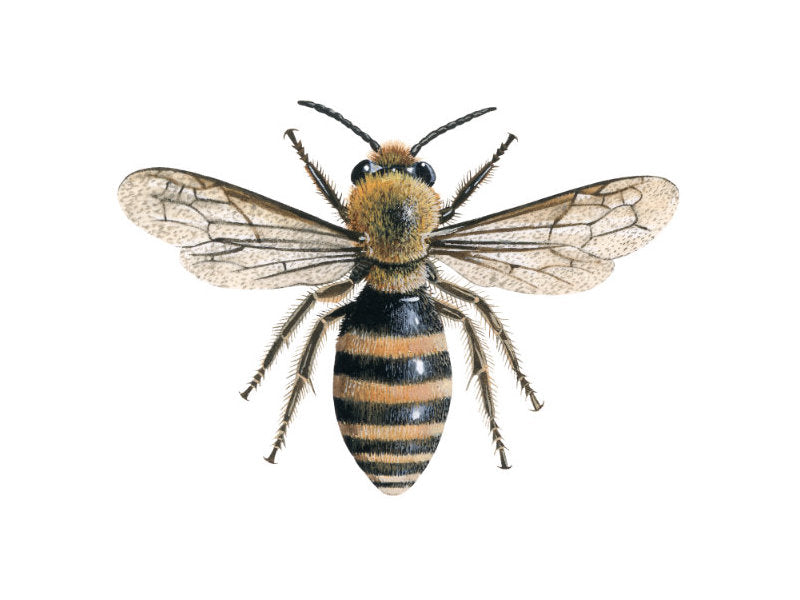
Illustration of female ivy mining bee
Ivy Mining Bee
Colletes hederae
How to identify:
Slightly larger than the honey bee but similar in shape, the ivy mining bee has a densely-haired ginger thorax and defined shiny yellow and black bands covering its abdomen.
When to see:
September to November. The solitary ivy bee is one of the last solitary bees to emerge each year.
Fun fact:
As their name suggests, the ivy bee feeds mainly on the nectar of ivy flowers when in autumn bloom.
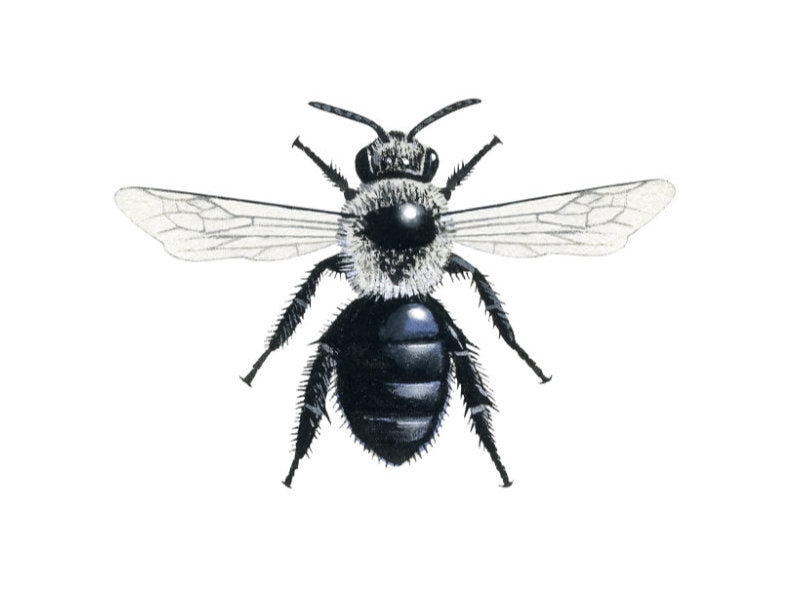
Illustration of female ashy mining bee
Ashy Mining Bee
Andrena cineraria
How to identify:
Ashy mining bees are recognisable by their striking black and ash-grey hairs that cover their dark bodies. The female and male ashy mining bees are similar in appearance, however the female is slightly larger and curvaceous with a glossier hairless abdomen.
When to see:
April to July.
Fun fact:
Ashy mining bees are not dangerous and are therefore safe to be around children and pets. In fact, solitary bees in general are non-aggressive because they do not have honey or a hive to protect.
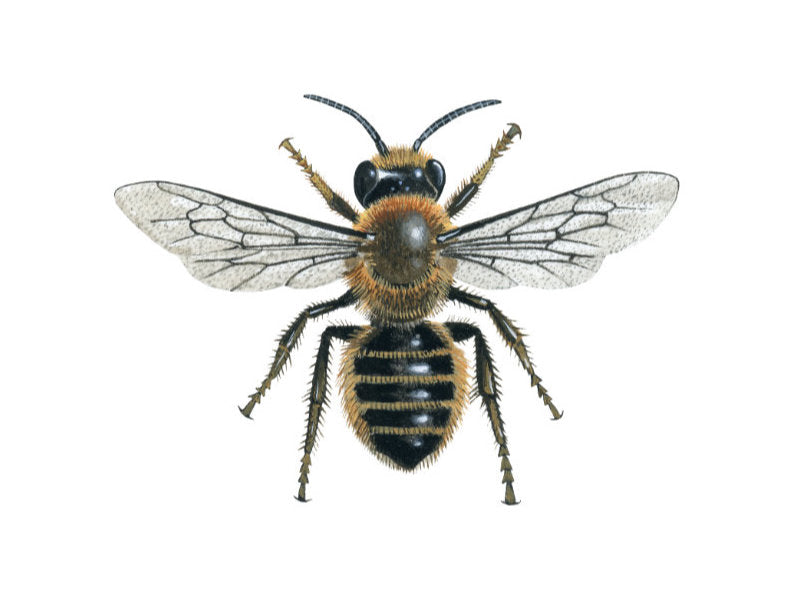
Illustration of female willoughby's leafcutter bee
Willoughby's Leafcutter Bee
Megachile willughbiella
How to identify:
The leafcutter bee is dark brown with light brownish hair around the sides of the thorax and between the abdominal segments. They have a larger head than most solitary bees due to the strong muscles they have developed to chew through leaves. They can often be found in flight with sections of leaf tucked between their legs.
When to see:
Mid-June to August.
Fun fact:
The wildflowers that leafcutter bees enjoy the most are: bell flowers, bird's-foot trefoil, thistles, brambles and herbs such as mint!
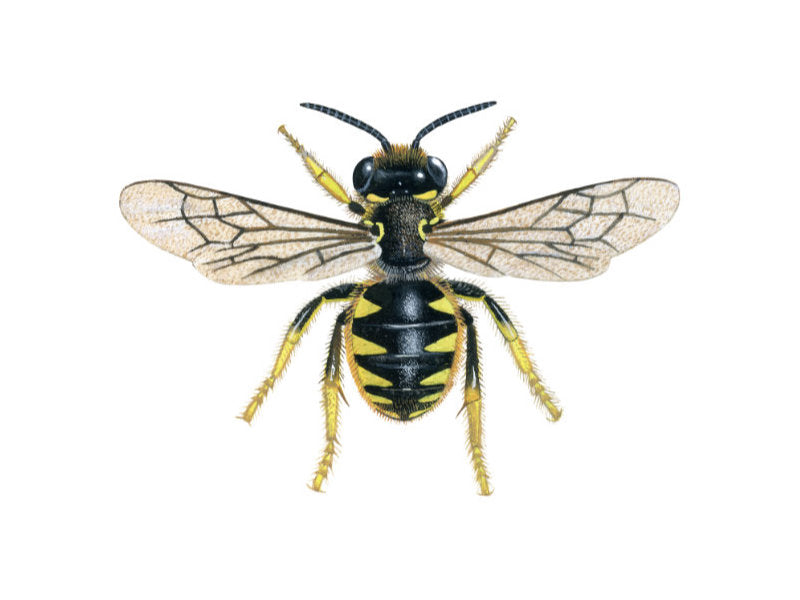
Illustration of female wool carder bee
Wool Carder Bee
Anthidium manicatum
How to identify:
Wool carder bees have unique bright yellow markings on their face and down the sides of their abdomen. These are one of the very few species of bee where the male is larger than the female. The male is also hairier and has spikes at the end of the abdomen. The female collects fibres from plants such as lamb’s-ear, and so can often be seen carrying these in silvery bundles.
When to see:
May to August, South of England.
Fun fact:
Male carder bees cannot sting, but they do have a set of threatening spikes on their tail which they use to scare away or squash any trespassers.
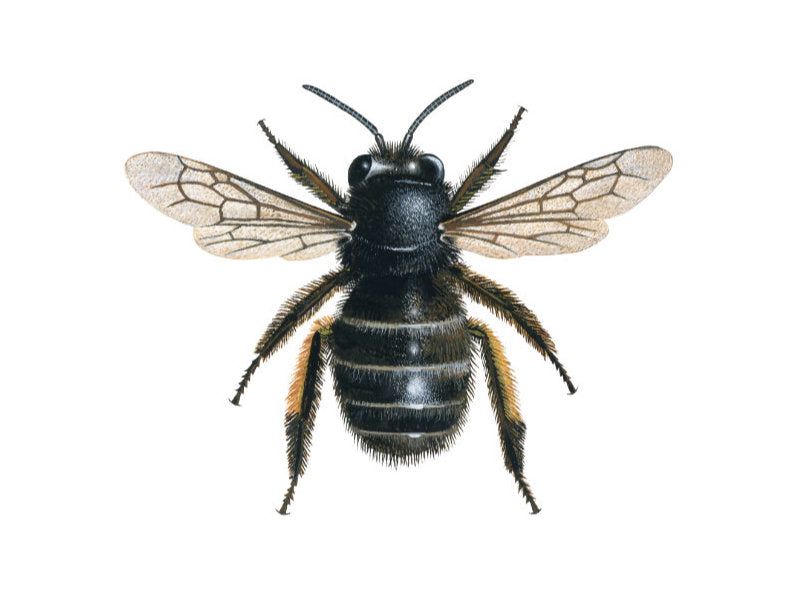
Illustration of female hairy-footed flower bee
Hairy-footed Flower Bee (female)
Anthophora plumipes
How to identify:
The female hairy-footed flower bee is dark all over with rusty-orange coloured hairs on its hind legs. They are large in size and so can often be confused with a bumblebee. The male and female species look remarkably different and therefore are easily identifiable from one another (see male identification below).
When to see:
March to May.
Fun fact:
If you have a fireplace you may find hairy-footed flower bees in your house, as newly-emerged bees can sometimes accidentally fall down the chimney!
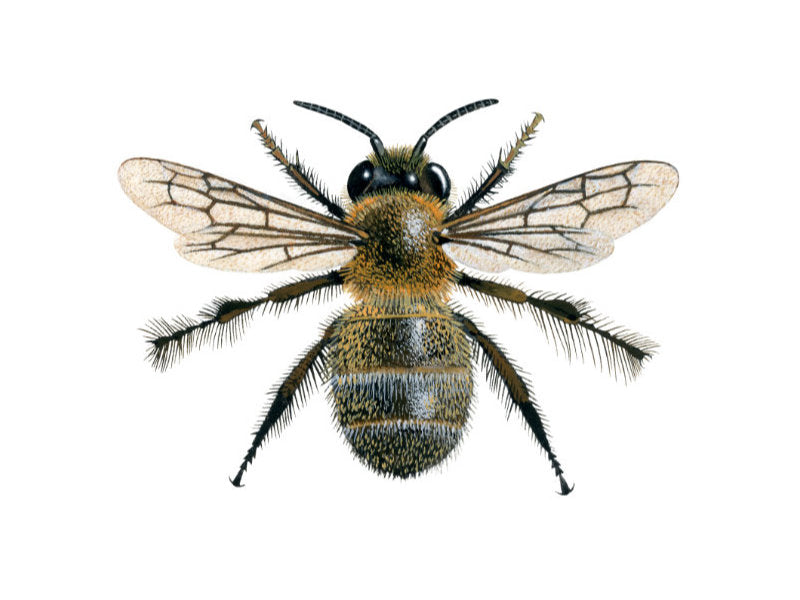
Illustration of male hairy-footed flower bee
Hairy-footed Flower Bee (male)
Anthophora plumipes
How to identify:
The male hairy-footed flower bee is buff-ginger-haired with a unique yellow lower face and distinguishing feathery hairs on its feet. The males are full of energy, and can be seen hovering and darting around female nest entrances in the soft mortar of walls and cob wall cracks.
When to see:
February to May.
Fun fact: This species is an important pollinator for early spring flowers such as lungwort.

Illustration of female harebell carpenter bee
Harebell Carpenter Bee
Chelostoma campanularum
How to identify:
These are tiny, narrow solitary bees (around 6-7mm in length), and are black in colour. Due to their size and colour they can be easily mistaken for flies. However, unlike flies, they have white pollen-collecting hairs on the underside of their abdomen.
When to see:
Mid-June to August.
Fun fact:
Males use harebell flowers as ‘B&Bs’ in bad weather and often sleep in the flower overnight for several days at a time.
JOIN OUR COMMUNITY
The Beevive community is all about sharing your passion for bees, wildlife and nature through photo, video; and connecting with like minded individuals. It’s a non-judgemental place to ask questions, learn and share. Watching our Beeviver’s encourage one another is just the bees knees! Join our diverse community by following us on Instagram, Facebook and YouTube.
